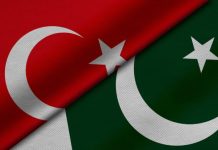-An insight into Indian Islamophobia
DM Monitoring
TELINIPARA (West Bengal): While the whole world has been fighting the novel coronavirus, Telinipara, a locality in the suburban West Bengal town of Bhadreswar, 40 km north of state capital Kolkata, has been fighting communal tension since May 12. Telinipara, once famous for its jute industry, is located on the eastern edge of Hooghly district, beside the eponymous river, and is part of Hooghly parliamentary constituency. On the evening of Sunday, May 10, a small inter-community squabble broke out here, which was resolved by police intervention. Monday, May 11 passed without incident. Then, on the afternoon of Tuesday, May 12, a big mob descended on the locality and large-scale targeted violence followed.
The district magistrate imposed Section 144 on the same day, and also suspended internet services in the adjoining Chandannagar and Shrirampur subdivisions of Hooghly district, within which Bhadreswar and Telinipara lie.
On Thursday, May 15, The Wire visited the areas where the violence took place in Telinipara. As we drove up the Grand Trunk (GT) road from Kolkata, we saw a completely charred shop at Babur Bazar junction in Bhadreswar, just before we turned right towards Telinipara. The name ‘Saad’ could still be spotted on the blackened wall. A mazhar (a Muslim shrine) opposite the Bhadreswar fire brigade station had been vandalised; from the road, we could see broken bricks and torn flags lying on the floor inside the shrine.
The atmosphere in Bhadreswar was calm, though we could hear people discussing the Telinipara incident as we passed a market. But the mood changed perceptibly once we turned right onto Dinemardanga street that led to Telinipara ghat.
This road had been partially barricaded by the police. The further we walked into the interiors of Telinipara, towards the spots where the violence occurred, we could see fewer people on the street. Fear was writ upon the faces of the few people who had ventured out.
On nearing the end of Dinemardanga street, we spotted Specialised Indian Reserve Battalion (SIRB) personnel posted at a crossroad Dinemardanga junction just before Telinipara ghat. Around 30 SIRB personnel are posted at the junction round the clock, one of them confirmed to The Wire. From Dinemardanga junction, a road goes left towards the now defunct Gondalpara Jute Mill, which has been shut for over two years.
A small lane cuts away to the right from the junction, going towards Ferry Ghat street. The road straight ahead ends at Telinipara ghat, a short distance away. The entire Dinemardanga street stretch from GT road to the junction is a predominantly Hindu neighbourhood, which we entered first.
We didn’t see any damaged houses or destruction of property on the entire road, barring two torched vehicles at the start of Dinemardanga street. The Wire verified the registration details of one of the vehicles from the Union Ministry of Road Transport and Highways website. The owner’s name is Gulam Sarwar Ansari. The owner of the other torched vehicle couldn’t be identified as its number plate was missing. We tried to speak to a few people in the area about the May 12 violence but the common refrain was, “I don’t know anything.” When we asked a grocer if she knew who owned these burnt vehicles, she replied, “I don’t know.”
To be Continued




